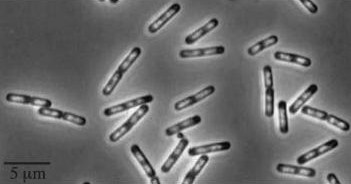Filamentous Cells
From 2010.igem.org
Revision as of 12:19, 29 May 2010 by RachelBoyd (Talk | contribs)
Filamentous Cells
| SOS response is believe to be a universal bacteria phenomenon first studied in E.coli -LexA, recA |
| In Bacillus subtillis (gram positive) dinR protein is homologous to lexA (Repressor of din-damage inducible genes).din genes include uvrA, uvrB, dinB, dinC dinR and recA. DNA damage inhibits cell division. |
Wild type Bacillus subtillis 
|
| dinR KO File:DinR KO |
| dinR KO mutant over expressed the divergent (opposite direction) transcript for YneA, YneB and YnzC. These genes form the SOS regulon (recA independent SOS response). File:Coding region |
| YneA suppressed in wt without SOS induction |
| Expression of YneA from ITPG controlled promoter in wt leads to elongation. |
| Disruption of YneA in SOS response leads to reduced elongation. Altering YneB and YnzC expression does not affect cell morphology. |
| Double mutant (dinR/YneA) File:Double Mutant |
| YneA protein required to suppress cell division. Not chromosome replication or segregation. |
| FtsZ is important for bacterial cell division forming a ring structure at the division site by polymerising
assembling other proteins necessary for division at the site. |
| FtsZ localises to the cell division cycle unless dinR is disrupted or YneA is being induced. |
| YneA suppresses FtsZ ring formation- no proven direct interaction by two-hybrid. |
| Filamentous cells less colony formation. |
| YneA expression via the inactivation of dinR by Rec A is important. |
| (Kawai et al. 2003) |
 "
"